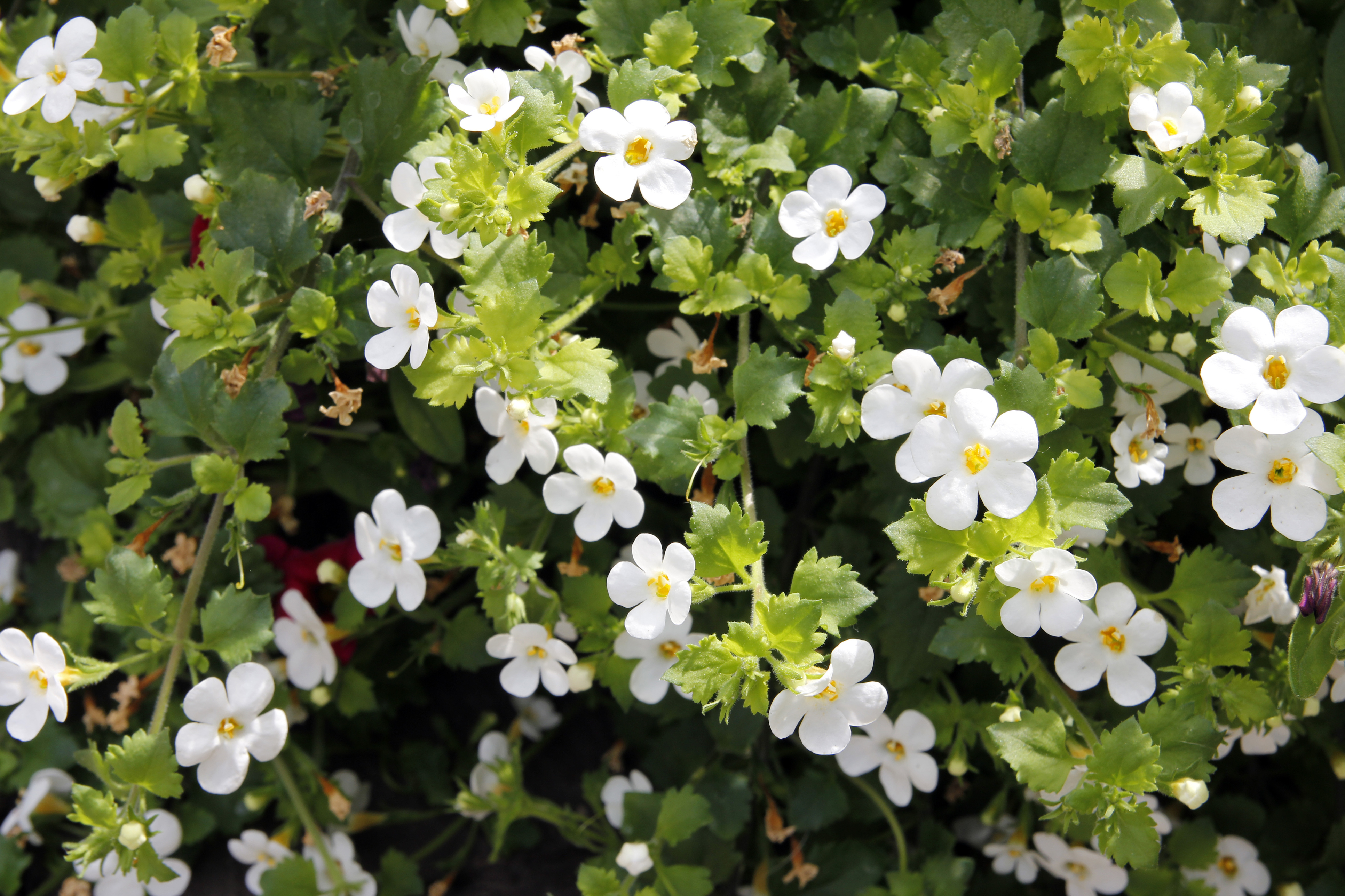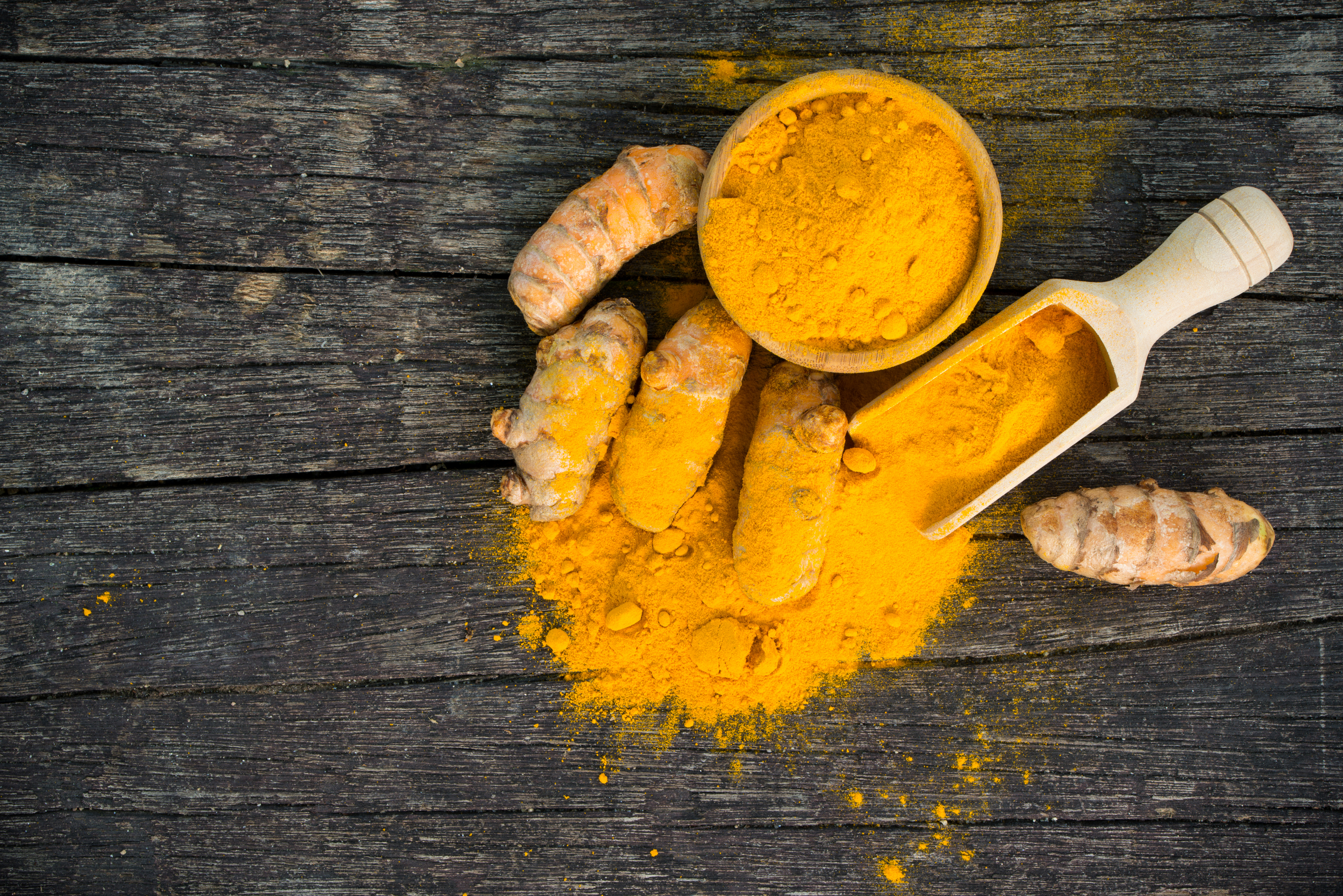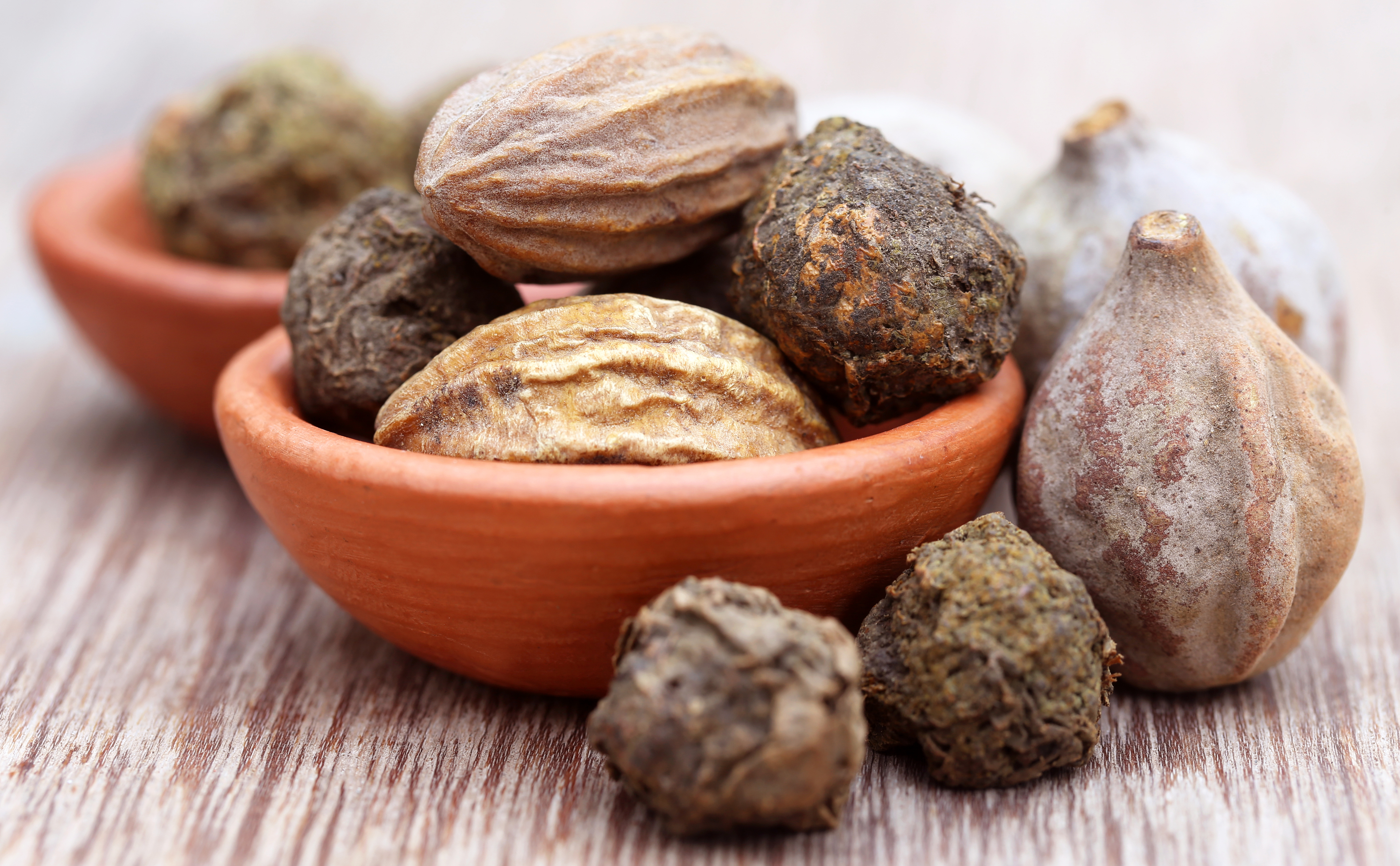Herbal medicines and remedies have been used for thousands of years in a number of different cultures to promote spiritual healing and to help support the body and mind. Ayurveda is one of these ancient medicinal systems that is believed to be more than 5,000 years old and is known mostly because of the herbal remedies that are used as part of its system.
This week’s blog is provided by expert nutrition practitioner Miguel Toribio-Mateas who delves deeper into the history of ayurvedic medicine and discusses how herbal remedies have been used for thousands of years to help promote better health and longevity.
The therapeutic power of herbs
Ayurveda is a Sanskrit word that translates literally as ‘the scripture for longevity’. It’s a holistic medicine system where human diseases are believed to be the result of imbalances between the different elements of the body, the mind, the intellect and the soul.
Reestablishing equilibrium helps the person recover lost health. Whilst this may sound somewhat esoteric for us Westerners, Ayurveda is an ancient system of traditional medicine prevalent in India as well as in several other south Asian countries.
The name first appeared in writing as far back as 3000 B.C., although the system itself is believed to be more than 5,000 years old. It was properly documented in sacred texts of the Indus Valley civilisation known as ‘the Vedas’, including the Rigveda, the Yajurveda, the Samaveda and the Atharvanaveda, which were composed between 12th and 7th century B.C. and which could be seen as the most ancient medicine books in existence anywhere in the world.

Although Ayurveda is known mostly because of the herbal remedies that are used as part of the system, it is described in detail in the Vedas as comprising 8 different subspecialties of medical treatment, named Ashtanga. This is not to be confounded with the energetic Yoga class you may take at your local gym. Ashtanga included included surgery, internal medicine, ENT, paediatrics, toxicology, health and longevity, and spiritual healing.
Although all of the subspecialties are interesting in their own right, as a clinician and a researcher I am fascinated by how herbal preparations used by Ayurvedic physicians over 2,000 years ago for their medicinal purposes were classed as brain tonics or rejuvenators and used to achieve better health and longevity.
I find it mesmerising how these ancient practitioners were able to suss out which plants to use for which condition, without the use of complex lab techniques, or any knowledge of molecular biology. Yet they knew that Ashwagandha would calm the brain whilst revitalising the nervous system, that Brahmi (Bacopa monnieri) would enhance memory and take the edge off anxiety, that Shankhapushpi and Gotu Kola for were good for those needing to be focused and alert, and that Kapikacchu would support the intellect and enable the body to better handle stress.
All of this knowledge, now confirmed by studies in test tubes, animals and humans, emerged much before randomised controlled trials and systematic reviews, yet these old age scientists knew exactly which plant – and which part of each plant – to choose to create every remedy.
Ashwaganda and inner calm
For example, Ashwagandha (Latin name is Withania somnifera), also known as ‘Indian ginseng’ is a shrub and all of its various parts (berries, leaves and roots) have been used by Ayurvedic practitioners as a natural rejuvenator, ideal for those who wish to experience inner calm without necessarily feeling sleepy because, despite the name ‘somnifera‘ (‘sleep-inducing’ in Latin), Ashwagandha doesn’t make you want to take a nap.
Instead, Ashwagandha is a powerful adaptogen, the type of compound that helps you manage stress and energy by ‘modulating’ or ‘regulating’ as opposed to ‘boosting’ or ‘dampening down’, if that makes sense. Ashwagandha is a source of a myriad of compounds, the principal ones being Withanolides, but also – and to name but a few – of catechins (not disimilar to those in green tea), naringenin (like that in oranges and lemons), kaempferol (like that contained in broccoli and grapes) and β-sitosterol, the stuff added to some low fat spreads so that they can say they’re good for your heart… (ahem!).
In human studies Ashwagandha has been shown to work by reducing anxiety and inflammation, measured as lower levels of C-reactive protein post-Ashwagandha ingestion. It’s also been reported to lower chronically raised cortisol levels, to improve cholesterol balance, and to help withstand stress.
In the brain, the compounds in Ashwagandha act as powerful antioxidants that protect neurones from free radical damage, preserving resilience and enabling better memory forming. As a neuroscientist researching brain ageing, I find the ability of Ashwagandha to protect brain health absolutely remarkable.
Bacopa, a touch of gentleness

And because cognitive enhancement is the subject of my doctoral research, I am also particularly charmed by another Ayurvedic gem called Brahmi in Sanskrit or Bacopa monnieri in Latin. I’ll call it Bacopa for short. In Ayurveda, Bacopa is used for anxiety, depression, learning, and for ‘general neuropharmacological disorders’. It has also been traditionally been given to children to boost brain power, and this is still common practice in India.
Bacopa is a source of bacosides, powerful antioxidant molecules with fantastic neuroprotective function. Bacosides are fat soluble, which means the natural compounds in Bacopa are better absorbed if taken with a meal that contains oil, or with a food like nuts or cheese that are rich fat. Bacosides in Bacopa also work as adaptogens, enabling better handling of stress. It would make sense, in that respect, to pair it with other adaptogens like Ashwagandha so that they can work synergistically.
This is done routinely by Ayurvedic practitioners who will often dispense Bacopa and Ashwagandha together to aid with anxiety and stress management, but also with sleep. In my own clinical experience Bacopa with or without Ashwagandha tends to promote better quality sleep if taken at night. Combined with Ashwagandha it works well by taking the edge off things when anxiety is an issue.
Protecting the Brain
In the brain, Bacopa interacts with both the dopamine and serotonin systems. It also promotes neurone communication by enhancing the rate at which the nervous system communicates by increasing the growth of nerve endings, also called dendrites. This is a process referred to as ‘neuroplasticity’. Loss of neuroplasticity means loss of adaptability in the brain.
This is one of the main reasons human brains grow old and we start experiencing the feeling that our brain isn’t what used to be. I’m 44, so that’s a notion that really resonates with me! Aside from enhancing dendrite growth, antioxidants in Bacopa ward off free radical damage to neurones and other brain cells. Although there is no direct reference to Alzheimer’s disease in the ancient Ayurvedic texts, concepts including forgetfulness, memory loss, and brain cell loss are indeed described in Ayurvedic literature.
It isn’t surprising that scientists working in the areas of cognitive decline and Alzheimers are particularly interested in Bacopa and other similar herbs. In fact for those of you who are familiar with the work of neurologist Dr Dale Bredesen, Bacopa is one of his favourite herbs for keeping the brain young. Existing human data for this plant makes me feel that it holds a huge amount of promise for those in need of effective neuroprotection.
Centella, a shining star of Asia
In Latin (and also in Spanish) Centella means ‘spark’, something that shines or glows. Going back to the way that Ayurvedic practitioners were able to figure out what plants to use for which condition, I’m drawn to another plant Centella asiatica or Gotu Kola not only for its beautiful name, but also because it’s used not only in Ayurveda but also in Traditional Chinese Medicine for its skin healing as well as its cognitive enhancing properties.
Just like Bacopa, in my clinical experience it takes a few weeks for people to come back to me and say things like “I think my memory is better than it used to be”, “I feel my thinking is sharper” or “I am better able to focus on my work”. This kind of clinical outcomes marries up with the scientific work that documents how both Bacopa and Gotu Kola increase neuroplasticity. I described this concept briefly before, but I just wanted to make sure it’s clear. Neuroplasticity doesn’t mean the growth of new neurones, which scientists refer to as neurogenesis. It refers to the growth of far reaching neurone branches or dendrites. This is because both Gotu Kola and Bacopa are able to activate a number of different proteins that enable the release of a very important molecule called Brain-derived Neurotrophic Factor (BDNF for short).
BDNF levels decrease in the ageing brain, and as they do a number of things start to happen. We lose our ability to form memories, to think sharply, to remember words, locations, numbers and faces. Again, I find it absolutely spellbinding how practitioners of traditional medicine systems knew about the therapeutic properties of these plants 3,000+ years ago without any of the sophisticated laboratory techniques we have at our disposal now.
Aside from its ability to protect the brain, Gotu Kola is well documented for its therapeutic use in cases of chronic venous insufficiency extending to poor circulation, venous reactivity, and adverse side-effects such as oedema and leg pain.
Better together
Regardless of their affinity with a specific tissue, Ayurvedic plants are all sources of powerful antioxidants. And anyone who knows about antioxidants will tell you that they work better together than they do in isolation. When you put two or more antioxidant molecules together they’re able to either strengthen each other, i.e. they work more efficiently than they’d do individually, or they’d recycle each other once one has done its job and ‘dies out’ turning into an oxidant, which is what antioxidants do. Well, human studies on curcumin, another well known Ayurvedic remedy that comes from the same plant as the spice turmeric, have shown that curcumin supplementation significantly increases the production of our own antioxidant enzymes that are present in the liver but also in every cell of our bodies. Some of their names may ring a bell, like superoxide dismutase, glutathione, and catalase.
It’s not unusual for a modern day Ayurvedic practitioner in India to prescribe Gotu Kola, Bacopa and curcumin for the same patient, and the rationale behind this combination would be to increase the chance of each of these plants / plant extracts to reestablish lost balance by complementing each other’s work on different areas, or in the lingo of a modern scientist by “increasing the number of molecular targets these compounds work on”.

So many plants, so little time
There are so many of these fascinating plants that I could see myself writing parts 2, 3, 4, 5, etc of this blog. However, in today’s ‘edition’ I am focusing on just a few of those that grab my attention. One is Shankhapushpi, used traditionally what trendy food supplement manufacturers would call today a ‘nootropic’, i.e. a supplement that is taken primarily for its effects on the brain, specifically aiming to increase cognitive power, focus, and alertness, but without feeling ‘wired’ like when you drink too much coffee. Extracts of the Convolvulus pluricaulis plant have been used for centuries, either aloe or in combination with Gotu Kola, as natural supporters of brain sharpness and focus, but the science behind how Shankhapushpi works is only just only emerging, so this is one I’ll definitely be watching develop in coming years as interest in nootropics is only going to grow.
My final two Ayurvedic herbs of choice for this feature are Kapikacchu (Mucuna pruriens) and a combination of herbs known as Triphala. Kapikkachu has been used traditionally in Ayurveda for motor balance as well as a libido booster and as an anti-depressant. It is interesting that all these situations share one common denominator, namely loss of dopamine balance. Insufficient dopamine is one of the factors in the neurodegenerative motor condition Parkinson’s disease. Lack of dopamine can also be behind lack of drive associated with depression, as well as lack of libido. Once more I am fascinated by how Ayurvedic practitioners used extracts of this plants as far back as 5,000 years ago, knowing – I guess intuitively or simply by trial and error passed through generations – that Kapikacchu had a positive effect on all these conditions.
Triphala is a combination of herbs, normally containing Bibhitaki (Terminalia bellerica), Amalaki (Emblica officinalis or Amla fruit) and Haritaki (Terminalia chebula). It has been used for centuries and still today it is a cornerstone of gastrointestinal and rejuvenative treatment in Ayurvedic medicine, where it is believed to have a number of therapeutic uses. Many are described in Ayurvedic medical literature as anecdotal (or if you’re more sophisticated, as n=1 trials), and other are being validated scientifically by scientists today. Searches in scientific databases describe Triphala as being potentially effective for several clinical uses such as appetite stimulation, reduction of hyperacidity, antioxidant, anti-inflammatory, immunomodulating, antibacterial, antimutagenic, adaptogenic, hypoglycemic, antineoplastic, chemoprotective, and radioprotective effects, and prevention of dental caries.
Additionally, some papers point to polyphenols in Triphala being able to act on the human gut microbiome and thereby promote the growth of beneficial Bifidobacteria and Lactobacillus while inhibiting the growth of undesirable gut microbes. Out of all the potential therapeutic uses, I find the latter the most plausible, and potentially the one that may then contribute to the rest, i.e. the relationship between our gut flora and the rest of the body systems is a booming area of research and scientists agree on how a healthy gut ecosystem is likely to contribute to better health outcomes in all body systems.

Final thoughts
There’s no doubt that we know very little about the potential of these and other plants used as part of traditional medicine systems to help us find lost health. Being an optimist, I trust that science will keep exploring how we can make the most of these wonderful natural aids so that we know exactly how they work and how to best use them to protect ourselves from disease.
In the meantime, there’s enough science available to know that many of these remedies aren’t only safe to use, but have got great therapeutic value and that they can make great additions to our current food supplement routines.
I would always err on the side of caution and, if in doubt, work with a health practitioner who understands how these plants work. Natural remedies can be great for optimising, but they shouldn’t be used to treat any condition. And if you’re on any medical drugs whatsoever make sure you tell your doctor about any food supplements you’re taking so as to minimise the risk of any interactions.
 Miguel is a doctoral researcher in cognitive ageing who’s experienced the research process from the laboratory bench – having completed a lab-based Masters in Clinical Neuroscience focusing on brain ageing – to the delivery of science findings in the consultation room, delivering quality individualised nutrition care to his clients from 2009. Miguel’s background includes 15+ years in senior training roles in life sciences and medical publishing, and he has trained scientists and researchers around the world.
Miguel is a doctoral researcher in cognitive ageing who’s experienced the research process from the laboratory bench – having completed a lab-based Masters in Clinical Neuroscience focusing on brain ageing – to the delivery of science findings in the consultation room, delivering quality individualised nutrition care to his clients from 2009. Miguel’s background includes 15+ years in senior training roles in life sciences and medical publishing, and he has trained scientists and researchers around the world.
With many thanks to Miguel for this blog; if you have any questions regarding the health topics that have been raised please don’t hesitate to get in touch with our nutritional therapists on nutrition@cytoplan.co.uk
Further reading
If you’re as intrigued as I am to find out about the effects of these Ayurvedic plants in humans, I recommend you head to the following pages on Examine.com to continue reading:
For Ashwagandha: https://examine.com/supplements/ashwagandha/
For Bacopa Monnieri: https://examine.com/supplements/bacopa-monnieri/
For Gotu Kola: https://examine.com/supplements/centella-asiatica/
For Kapikacchu (Muruna pruniens): https://examine.com/supplements/mucuna-pruriens/
Cytoplan stocks a wide range of herbal supplements and botanical actives.
Last updated on 23rd February 2024 by cytoffice



Your work is very interesting. I love reading your articles and look forwarding to receiving them.
This information should be given to GPs instead of all the pharmaucial products
given to patients that causing so much problems to their health.
Please carry on yr good work
Dear Joan
I agree 100% . This information on the Wisdom of Ayurveda needs to be available to the mass public. Nature always has an answer to our human problems if we allow it. Thank you Miguel.
Fascinating – for the lay person though this can be a bit overwhelming: if there was just one a healthy person should take, which one would it be? So many to choose from!
What a fascinating read. If only this information was more widely embraced by GPs etc.
Thank you so much for this article. More like it wd be most welcome.
I have been particularly interested in both pharmaceuticals, and the safer non-toxic alternatives, since my mother was killed by the Opren drug, and my husband’s brain and personality were decimated by the prescribed statin, Lipitor. Everyday crimes against humanity, from GPs who can’t possibly all be unaware of the consequences of what they are doing, but who nevertheless use the mantra, ‘It can’t possibly be the drug.’